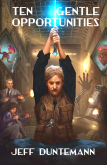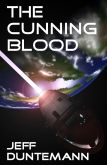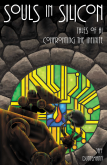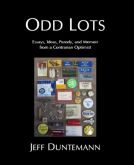- Here’s how the ancient Greeks calculated the distance between the Earth and the Moon. If the notion surprises you, well, you were reading comic books during geometry class, weren’t you?
- Although I’d heard of the Millionaire Calculator, a sort of mechanical uber-sliderule used circa 1890-1940, I did not know that it had helped to discover Pluto.
- From The Words I Didn’t Know Until Yesterday Department: materteral, of or pertaining to an attentive aunt–basically the female analog of avuncular. Less commonly, materterine. Thanks to Jonathan O’Neal for calling them to my attention.
- I was going to cite Sion , Philip Boast’s outrageous but hugely fun riff on the whole Da Vinci Code thing, as an example of a print book you can’t buy in the US (see yesterday’s entry) but I was wrong: You can get used copies here for a dollar. No extra charge for either the zombies nor the angels with pubic hair.
- Dell has not handled its notorious SX270 capacitor problem especially well. “Hide the corrosion” might have been the company line, and the results could be Capacitorgate. That said, Dell is not the only vendor to have had this problem. (There’s a whole forum devoted to bad PC capacitors.) I’ve been lucky so far…but I’ve also switched to SX280 machines, which are not as prone to the problem.
- They Don’t Make ‘Em Like This Anymore…and when they did, I missed them. Dayum. (More if not quite as cool at Gizmodo.)
- Alfred Powell Morgan basically got me started on electronics when I was 11, through his decades-spanning series of books on electronics for boys. Here’s a nice bio sketch of the Dan Beard of electronics from the ARRL Web site.
- The late Thomas Gold (author of The Deep Hot Biosphere) may have been right. I certainly hope so.
- Honda, I know you’ll never actually build that car, so that being the case, could I have an SUV painted the same color?
- If ski season seems to have come early this year, you aren’t being singled out. It’s snowing on Comet Hartley 2. (Hey, spin that dogbone and make a habitat out of it!)
- 70 is the new 40, and zombies are the new vampires. Let’s talk about this again when I’m the new 40.
- I’ve never been a beer guy, but if I did drink beer, it would probably be this one.
- And pertinent to the above, here’s an elegant solution to a problem that I myself will never have.
- This, on the other hand, is something I could definitely get into.
history
Odd Lots
Geiger Counter Articles from the Uranium Rush
I ran across a couple of Geiger counter circuits while preparing the Carl & Jerry books a few years back, but it wasn’t until I went looking in Google Books for other articles that I got a sense for the time period 1950-1960, when there was a certain Uranium madness in the air. At first it was about prospecting, but later on as the 50s drew to a close, it was mostly about fallout.
There were articles not only on building Geiger counters, but also reviews of commercial units and practical tips on how to search for the minerals. Sometimes it was a cover story (as with Popular Electronics for July 1955; scroll down) but mostly it was just a part of the electronics hobbyist zeitgeist in that era. There was a certain grim exuberance about it all: The evil Soviet Union was breathing gamma rays in the faces of our collective cultural consciousness, and we were ready to respond with our archetypal American can-do spirit. Some of us understood that the unspoken clause after “duck and cover” was “and die.” Most, I think, did not. (Especially naturally optimistic 11-year-olds like me who just wanted to build a cool gadget with a Geiger tube he already had.)
So below is a list of the construction articles I’ve discovered for Geiger counters in the 1950-1960 era. Many are on Google Books, and I’ve posted the circuits from a couple of the others. If you have any more not listed here, please pass along links or scans so I can add them. I’m considering a standalone Web article for my Junkbox site on building “legacy” Geiger counters based on my current experience, so whatever you have that might be relevant, please share.
- Popular Mechanics, February 1949: “How to Build a Geiger-Muller Uranium Survey Meter“. Brute force power supply consisting of three 300V batteries in series! Uses K-EX GM tube in series with headphones. No audio amp.
- Popular Mechanics, July 1950: “Uranium Survey Meter With Audio Amplifier.” Much like February 1949 PM item, plus an audio amplifier. Uses CK-1021 GM tube (others are suggested as usable) and a 3V4 battery miniature tube for audio, which requires a 1.5V filament supply and a 45V plate supply.
- Popular Science, April 1955: “Prospecting with a Geiger Counter.” Uses a CK-1026 GM tube, with HV generated by a pushbutton interrupter. 3S4 tube audio amplifier. Basically the same circuit as in Alfred Morgan’s Boys’ Second Book of Radio and Electronics.
- Popular Science, May 1955: “Super Geiger Counter You Can Build.” Ambitious circuit with six (!) GM tubes in parallel plus a 2-tube audio amplifier, and a vibrator high-voltage supply. The GM tubes are all Anton 310 units. Has an averaging count meter.
- Popular Electronics, July 1955: “Home-Built 700V Geiger Counter”. Two circuits, both using batteries (300V + 67.5V) in a simple voltage doubler. (No sparks!) One circuit has no audio amplifier, and the “deluxe” circuit has a 3S4 tube audio amp and an averaging count meter. Both use the Victoreen 75NB3 GM tube.
- Popular Electronics, June 1956: “Simple Transistorized Geiger Counters”. Calls out either a CK1026 or a Victoreen 1B85 GM tube. Three circuits: two using 300V batteries, and a third with a pushbutton interrupter for HV. Tube audio amps are replaced by transistor amps, using general-purpose devices (2N35, CK722) that are not critical.
- Popular Mechanics, March 1957: “Prospector’s Partner.” A combination 4-tube battery superhet AM radio (with canonical 1R5/1U4/1U5/3V4 lineup) using a 1B85 GM tube patched into the grid of the first audio stage. Uses a pushbutton interrupter HV supply for the GM tube; 67 1/2 V battery for the radio.
- Popular Electronics, July 1957: “Geiger Gun”. Compact gun-shaped hand-held counter counter using a CK1026 GM tube, pushbutton interruptor, and 2N107 transistor audio amp. Article is not online, but there are images of the counter as built in a junction box by someone here. (Scroll down.) Circuit is here.
- Popular Mechanics, August 1961: “Treasure Finder’s Pal.” A combination metal detector and geiger counter. Uses a CK-1026 GM tube and a CK-722 transistor oscillator into a universal output transformer to generate HV. GM tube output is patched into a transistor radio for audio amplification.
Daywander
 I’m preparing a writer’s autobiography for Gale Research, and they requested photos of me at various points in my career. One of the most interesting–and one I haven’t seen in a while–was taken by Peter Frisch back in 1983, when we lived in Rochester, NY. Nancy Kress and I had just finished “Borovsky’s Hollow Woman,” and I was in my Chester A. Arthur stage. I want to say it was in connection with a TV interview that she and I gave, but I’ve forgotten most of the details. It did occur to me that the facial hair/leather vest thing had a certain steampunkish air about it, but steampunk itself wouldn’t exist for another fifteen years or so, and once again I was too far ahead of the curve for it to do me any good.
I’m preparing a writer’s autobiography for Gale Research, and they requested photos of me at various points in my career. One of the most interesting–and one I haven’t seen in a while–was taken by Peter Frisch back in 1983, when we lived in Rochester, NY. Nancy Kress and I had just finished “Borovsky’s Hollow Woman,” and I was in my Chester A. Arthur stage. I want to say it was in connection with a TV interview that she and I gave, but I’ve forgotten most of the details. It did occur to me that the facial hair/leather vest thing had a certain steampunkish air about it, but steampunk itself wouldn’t exist for another fifteen years or so, and once again I was too far ahead of the curve for it to do me any good.
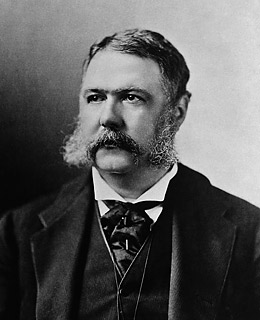 President Arthur was an interesting guy in his own right, an unelected one-term, one-issue president hell-bent on reforming the civil service system, otherwise mostly famous for his linear facial hair and serving between James A. Garfield and Grover Cleveland. He appeared on what I believe is our nation’s only 21 cent stamp, issued because we had many more past presidents than postal rates back in 1938. I commemorated him by naming the President of Valinor (of my Drumlins saga) Chester A. Arthur Harczak mostly after him, but also after a well-known Chicago sausage factory. This fairly represents my opinion of most politics.
President Arthur was an interesting guy in his own right, an unelected one-term, one-issue president hell-bent on reforming the civil service system, otherwise mostly famous for his linear facial hair and serving between James A. Garfield and Grover Cleveland. He appeared on what I believe is our nation’s only 21 cent stamp, issued because we had many more past presidents than postal rates back in 1938. I commemorated him by naming the President of Valinor (of my Drumlins saga) Chester A. Arthur Harczak mostly after him, but also after a well-known Chicago sausage factory. This fairly represents my opinion of most politics.
The other excitement in recent days is that we have a daytime bear here. Four times since Tuesday I’ve been driving through the neighborhood and seen him sitting nonchalantly in front of an overturned garbage can in broad daylight, feasting. Bears are generally nocturnal but this one didn’t read the manual, and he’s been raiding dog food bins in people’s garages and scaring the crap out of the unwary. I actually stayed in the garage yesterday tidying up, from 8 AM, when I put the cans out, until about 11 when the trash guys came by, to make sure he wouldn’t make a mess in our driveway as he’s made in so many others. Now, precisely what I was going to do if he decided to raid the can is unclear. Per my entry for September 8, 2010, I do have a hacksaw here, but not a pistol that a bear would understand. (And bears have been known to open freezers all by themselves.)
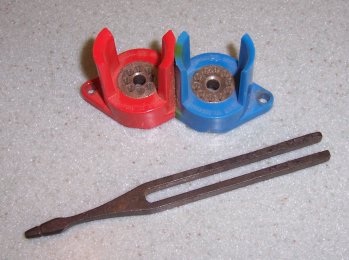 No bear action, alas (or whew) but I did get the garage about as tidy as it’s been since the day before we moved in back in 2004. Our rear wall full of brand-new Elfa shelving system absorbed a boggling amount of clutter, allowing me to get my tool shelves in order and compacted (I now have empty shelf space!) and actually schedule time to wipe down, oil, and maybe even use my lathe.
No bear action, alas (or whew) but I did get the garage about as tidy as it’s been since the day before we moved in back in 2004. Our rear wall full of brand-new Elfa shelving system absorbed a boggling amount of clutter, allowing me to get my tool shelves in order and compacted (I now have empty shelf space!) and actually schedule time to wipe down, oil, and maybe even use my lathe.
Given that we never saw the bear, yesterday’s highlights included finding my tube pin straightener and my father’s tuning fork (stamped “A”) neither of which I’d seen since the last century. I’m out of Diet Mountain Dew and my back hurts, but overall I still consider it a win.
What Dogs Gave Us
We domesticated dogs. And dogs, in return, made human civilization possible.
Work with me here. A lot of my recent reading has been about human origins, stemming from my fascination with Homo Neanderthalis and what became of him. Two books of note: The Third Chimpanzee by Jared Diamond (1993) and Before the Dawn by Nicholas Wade (2007.) Jared Diamond is always a good read, and even though the book is showing its age I strongly recommend it. Wade covers much of the same turf, but does so with the tools of DNA analysis that simply didn’t exist twenty years ago, when Diamond was doing his research. By counting mutations and working backwards through Y (male) chromosomal DNA and mitochondrial (female) chromosomal DNA, we can infer a great deal about human populations, where they came from, how they changed, and when. Of some of it I’m dubious–the extrapolation about the sources of human language, for example, seems a stretch–but most of it is no longer controversial, nor even exotic.
Both authors draw on anthropological research of stone-age peoples who survived into the 20th century. (Diamond did a lot of that research himself, in New Guinea.) The picture they paint of early humanity is grim: We are not fallen angels. We are risen apes. The hallmark of early humanity was deliberate genocide: New Guinea tribesmen told Diamond straight-out that their overall tribal goal was the extinction of other tribes. The homicide rates among such tribes are many times that of the homicide rate in Detroit; men who cannot claim to have killed another man often cannot persuade women to marry them. This seems to have been the pattern for hunter-gatherer societies as far back as we can see via the fossil record. Many Neanderthal skeletons show the marks of multiple healed bone and skull fractures, and a couple of them evidence of spear impingement on bone. Constant warfare was the pattern, and the method (judging from modern stone-age peoples) was the dawn raid: Raiders would stealthily draw close to a rival tribe’s encampment, and wait for the rivals to turn in. Then, when there was just enough dawn light to move well, the attackers would fall upon the sleeping rivals and spear them where they lay.
This worked, and worked well. People have to sleep, so the attackers had the advantage. Then one day about 15,000 years ago, something unexpected happened: Animals around the rival encampment sensed the attackers creeping in for the kill, and set up a huge and unfamiliar racket. The rival group, awakened by the animals, grabbed their spears and gave chase. The attackers had been up all night waiting for just the right moment. The defenders had just had a good night’s sleep. They could outrun their sleepy-eyed assailants, who had a ways to go to return to their home turf. More than a few attackers probably took a spear through an eye socket, and once enough of your dawn raiders take a spear through an eye socket, dawn raiding becomes a lot less compelling.
All because of some previously unknown animals who looked like wolves but made noises that wolves did not make–and appeared to consider the rival camp to be friends rather than food.
As best we can tell, dogs were first domesticated about 15,000 years ago, which was just about the time that Homo Sapiens was moving from wandering hunter-gatherer societies to settled societies that eventually became agricultural and pastoral societies. Just how they were domesticated is still unknown, but the work of Belyaev and his silver fox suggests simple selection by temperament: Ancient wolves became camp followers, and ancient humans tossed them scraps. Wolves who could stand to be near humans ate better without working as hard and had more pups. The few stone-age tribes we’ve been able to study sometimes captured wild animal juveniles and kept them as entertainment until they became grouchy on maturity. Dogs need to be handled as puppies to be fully at peace with humanity as adults; perhaps those wolves-in-transition descended from adult wolves who were handled by humans as pups and remembered: Those two-legged whatchamacallits handled me without hurting me–and they toss me aurochs bones!
15,000 years ago, that was a helluva deal if you were a wolf.
Explaining the bark is tougher, but group selection suggests that if some quirk in the genes of certain wolves allowed those two-legged whatchamacallits to survive and thrive, there’d be more aurochs bones and more yappy wolf/dog pups. Evolution works fast: Belyaev turned wild fox into peculiar (if not completely domesticated) pets in only 40 years, simply by selecting fox who were most willing to be handled when young and least snarly and aggressive when mature. A fox who will lick your face instead of biting your nose off is most of the way to a dog anyway; in another hundred years, he’d be sleeping at the foot of your bed and fetching tennis balls.
The bottom line is this: Without dawn raids, settled living rather than wandering became possible, and settled living fostered the development of villages and agriculture and trade and writing and all the other precursors of the lives we live today.
The Neanderthals had bigger brains than we do. What they didn’t have were dogs. And, lacking dogs, the unfortunate louts dawn-raided one another to extinction, leaving homo sap and his faithful yappers to pick up the turf and eventually take over the world.
Raise a glass of Laughing Lab Ale to canis familiaris: Everything we are we owe to him. Good dog!
Las Vegas Quarters
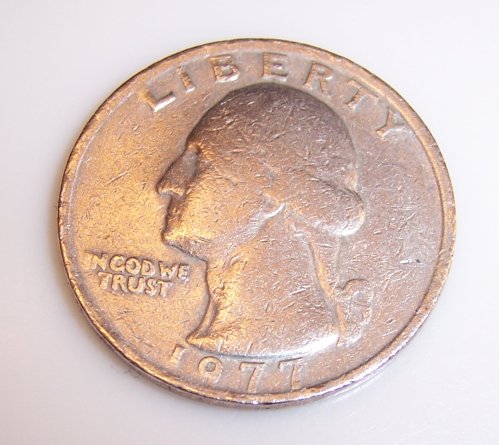
I got a Las Vegas quarter in change the other day. This is a term I use for certain coins (generally quarters but occasionally nickels) that (after spending decades ricocheting from one slot machine to another) have a distinctive beat-to-hell appearance that can’t be mistaken for anything else. Las Vegas quarters don’t wear smooth and shiny like quarters that people use to buy burgers at McDonald’s. They’re full of dents and nicks and more matte than polished. They also look like they were dug up in some Roman ruins in Gaul after a century or three of service.
Vegas fired its quarters back in the late 90s, when computerized slotless slot machines began replacing electromechanical slot machines with a vengeance. They’re now gradually filtering out into general circulation. This is the second I’ve seen this year, after never getting one outside the city itself prior to that.
I never entered a Las Vegas casino before my first trip to Comdex in 1985, and I remember that the metallic racket of quarters being spit into stainless-steel pans at the Continental Hotel and Casino was continuous and never stopped for even a second. The psychological effect was intentional and obvious: People weren’t just winning now and then. People were winning constantly. And the quarters paid the price.
By the time Carol and I took a short trip to Las Vegas a few years ago, the coin machines were gone. The racket of interacting metal objects had been replaced by a continuous cacophony of crude digital jingles, a sort of MIDI hell that I found a lot harder to take than the now-vanished quarter clatter.
I have a little dish of odd coins that I’ve gotten in change over the years (mostly foreign ones and American coins with weird damage) and my 1977 Vegas quarter will join them. Such quarters are tokens (literally) of a piece of technology that slipped away when nobody was looking, and a hundred years from now, I wonder if someone will pick up such a quarter and think, “My God, what happened to that poor thing!”
Odd Lots
- On Monday I returned the last third-pass page proofs (of a very gnarly part of the book, the partial instruction reference) and if the publisher’s schedule is to be believed, Assembly Language Step By Step, Third Edition goes on press tomorrow. Real books should be out of the bindery and in the warehouse by September 22.
- We came within a few hours of having a sunspot-free calendar month in August, but then very late Monday night, a barely visible sunspeck showed up, ruined the run, and then immediately started to vanish. The sunspot minimum appears to be heading for a double bottom, and there are people at NASA suggesting that deeper mechanisms are changing within the sun, and we may be a long time before seeing anything like a proper sunspot peak. So much for DXCC on 10M.
- Cory Doctorow speaks up on cloud computing, the goal of which, he says, is to allow companies to make money in a mature computing market by charging you month by month for computional facilities that you already have at home. So tell me: How many people actually collaborate in the Cloud, as a percentage of people who actually compute? I think it’s in low single digits–which suggests that the Cloud as an idea is something like 95% scam.
- If you’re following Michael Arrington’s CrunchPad project, the CrunchPadFans blog is worth a visit every week or so. It’s a little sparse, but there hasn’t been much news generally on the long-awaited gadget in recent weeks. I intuit that it would make a jack-fine ebook reader, if software to handle the major formats is included or installable.
- And speaking of ebook formats, Sony has announced that it will be supporting the EPUB format in its new reader products, days after Google’s announcement that it will be doing the same within its Google Books system. EPUB is a reflowable open standard not controlled by any particular firm, and if I had to finger a winner in the ebook standards wars (at least for primarily textual works) this would be it.
- Further relevant to ebooks is a reader app I’ve been fooling with on Ubuntu: Okular, which is nominally a PDF viewer but can open and display lots of other formats, including DjVu, CHM help files, Epub, Plucker, MobiPocket, and a few others. Although it’s a KDE 4 app, I’ve had no difficulty making Okular run under GNOME. Okular on a suitable handheld Linux-enabled device could make a helluvan ebook reader.
- And Okular led me to the KDE on Windows project, which aims to create native-code ports of KDE apps to Windows, with an installer to make it easy for non-techies. It’s early and the product doesn’t look as easy as it should be, but then again…it’s early.
- I’ve discovered a much higher-resolution photo of the old Turtle Wax building at the Ashland/Ogden/Madison intersection in Chicago here. We would pass that building on the way to my grandfather’s house Back of the Yards back in the late 1950s, and my mother would always point out the 25-foot tall turtle on the top of it. Cool building, too, turtle or not. Gone now, alas–the turtle and the building both.
Henley’s Grimoire
Forty three-ish years ago, Uncle Louie gave me a Geiger-Muller tube. I tried to build a Geiger counter with it and failed, and I had this notion that if I could find the tube, I would try again. I haven’t seen the tube for quite a few years, but I don’t recall giving it away or breaking it, so the damned thing may still be down in the pile somewhere. I dug around yesterday, digging through some boxes I haven’t looked through in awhile, including a few that have been sitting in the closet unopened for all the six years since we left Arizona.
I didn’t find the Geiger tube. But I found something else that I thought I’d lost: My 1928 copy of Henley’s Formulas, which I bought at some used bookstore or another in the ’80s and had used as padding (!) in a box containing sweep tubes, 807s, 811As, 829Bs, and other peculiar and outsized specimens. This was a helluva coincidence, as I recommended the book to a friend of mine a few days ago as a handbook of “barn technology” as it was understood and practiced circa WWI.
Henley’s reminds me of nothing so much as John Markus’ 1968 Sourcebook of Electronic Circuits, which Markus apparently assembled by photocopying every schematic he could grab and slapping it between two covers. Gardner Hiscox did very much the same thing with Henley’s, which consists of thousands of short and very short items much like the following:
A Grease for Locomotive Axles. Saponify a mixture of 50 parts tallow, 28 parts palm oil, 2 parts sperm oil. Mix in soda lye made by dissolving 12 parts of soda in 137 parts water.
That was under Lubricants, where there are literally dozens of recipes like the above, for greases and oils of every conceivable use. Not every entry is a recipe; some relay a sort of lost wisdom that was mostly lost (at least to cityfolk) even a hundred years ago. E.g.:
Bear Fat. Fresh bears’ fat is white and very similar to lard in appearance. The flank fat is softer and more transparent than the kidney fat, and its odor recalls that of fresh bacon. Bears’ fat differs from the fats of the dog, fox, and cat in having a lower specific gravity, a very low melting point, and a fairly high iodine value.
There is a recipe for “Dog Soap” calling for 5 parts petroleum, 4 parts wax, 5 parts alcohol, and 15 parts “good laundry soap.” This doesn’t sound like a good scrub for white dogs. (QBit just dove under the bed.)
What we have here, as with Markus’ book, is a grimoire: A magician’s memory jogger set out by categories, containing enough of the details to get you back in the groove without providing enough context to do much with them if you’d never done them before. There was a day when certain people did things like this all the time, out in the barn or the shed, and mainly this book was parked up above the buckets and barrels in case we couldn’t recall how many parts of caoutchouc went into that great rubber cement we whipped up a batch of last spring. If you needed a step-by-step, it was ask gramps or sit by Nellie.
Life used to be messy, and this is definitely a very dangerous book for boys. The Explosives section runs several pages, and explains at length how to make gunpowder, guncotton, dynamite, explosive chlorates, and smokeless powder. Some of the recipes are nonetheless exaspiratingly brief:
Fulminating Bismuth. Take bismuth, 120 parts; carbureted cream of tartar, 60 parts, and niter, 1 part.
Take it, sure–at least when I figure out how to carburate my cream of tartar. What one does with it after one takes it; now, that’s the trick. I’m not sure you just grind it all up in the mortar. I guess people knew how to make their own fulminates back then. Today, you’d just sink a pipe into the blogosphere and stand back.
A lot of the recipes are for personal care products, including cosmetics, perfumes, many kinds of soaps, treatments for rashes and lice, and even odder things, like one short entry entitled “Skin Bleach for Negroes.” The largest single section in the book, as best I can tell, explains the details of making alcohol of many kinds, including calculations of yield per bushel of corn, sugar, or potatoes, and even fruits like bananas. There are pages and pages on dyes, paints, and inks, and a surprisingly large section on metal plating.
Much of the trouble with Henley’s is the endangered terminology. I’m sure people used to know what “saponify” and “carburate” meant, and I had a vague idea in both cases. But I thought a “lute” was a medieval guitar; in fact, it’s also a kind of putty. I had heard of caoutchouc but had the spelling wrong. I had not heard of iodoform, though I bet I used to smell it down at Dr. Pierce’s office in the 1950s. Kefir used to be called “matzoon.” “Menstruum” isn’t what it looks like; it’s actually an archaic term for “solvent.” I haven’t looked up “red bole” yet, and I thought there was more than one color of vitriol. I’ve heard the word “tragacanth” but it’s been a long time. Ditto “putz pomade,” though it sounds like the nickname of a third-string hockey player.
And that was just my first hour of flipping pages and reading random snatches. This is a fascinating book, not so much for whipping up your own matzoon as getting a sense for what people were willing to do in the days before Wal-Mart and Home Depot, before safety became a religion and milkfat became radioactive waste. Back then, skimmed milk was considered dross, suitable only for the making of casein. (It is an “article of slight value, and cannot even be employed in feeding hogs.” Bravo! What he said!) Back then, I guess, we made it do or did without, and we were willing to go to a lot more trouble to make it do, assuming we had enough tragacanth powder out in the shed.
Henley’s has long been in the public domain (its copyright was never renewed, even for the post-1923 editions) and there are plenty of recent reprint editions for sale on Amazon. (You can also get a free PDF facsimile on the Internet Archive.) Mine is an original, and I like that. I stuck my nose in the gutter and caught the scent of…something old and mostly forgotten. But no! Of course! On page 509: Take 1 ounce orris root, 60 grains terpinol, 4 drams tonka…
Odd Lots
- SRWare Iron was doing a peculiar thing: When I used it to view my junkbox.com main page, the title image was broken. This was not the case using IE, FF, or Opera. Nor was it true of the several other images on that same page, but only that big main one. An intuition led me to look up the name of the image file: junkboxmainbanner.png. I renamed the file “junkboxmain.png” (that is, removing the substring “banner” from the filename) and the image began rendering normally. I guess there’s a downside to adblockers as twitchy as this one.
- From Bruce Baker comes a nice chronological screenshot survey of computer GUIs since the primordial Xerox Alto in 1973, up through Windows Vista and KDE 4. No judgements are passed on the products, and not much history is offered, but it’s unusual to see them all lined up in one place, and one definitely gets a sense for the way it all evolved, and especially for the immeasurable debt that Apple owes Xerox.
- On a tip from Pete Albrecht, I’ve learned that the Progressive Insurance girl Flo and one of the Geico cavemen shared a scene in the short-lived 2007 TV sitcom Cavemen . Here’s a YouTube clip of the scene. This was sheer coincidence; the Progressive ad campaign did not happen for at least a year after that and Stephanie Courtney just happened to get the part. I tried to like the series and failed, but I’ll admit that it had some surreal moments, a few of which we evidently didn’t appreciate at the time. Now, cavemen ate geckos. (Cavemen ate anything they could catch.) Dare we hope…
- Here’s an old article from Popular Mechanics on building your own Geiger counter. Michael Covington reminds me that there was a circuit in Alfred Morgan’s book The Boys’ Second Book of Radio and Electronics, though it had a peculiar power supply and didn’t work when I tried to build it in 1966. (I may still have the G-M tube somewhere, but I can’t find it and in truth haven’t seen it in decades.)
- Yet another one, this time from Popular Science, March 1950.
- Todd Johnson suggests using scrounged or surplus fluorescent lamp supplies from computer scanners for homebrew Geiger counters. I’ve got two defunct scanners on the woodpile downstairs, but if you don’t, Todd also sent along a pointer to a surplus source, for only $5.
- Today is Ubuntu 9.04 day. It’s like the Day after Thanksgiving at Marshall Fields up there, so don’t expect much in the line of download performance. I’m going to wait for the dust to settle a little (and maybe for my assembly book to be done) but it will happen here sooner or later. If you want it, look for torrents. And come with a backpack of patience.
- Do you have Linux running on an Intel DQ35 motherboard. If so, be careful.
- Finally, this clever food hack reminds me vaguely of something. I don’t know what. That’s probably just as well.
Odd Lots
- My Web article on how I designed my workshop has just been aggregated on the Make Blog.
- Here is the best summary of sunspot-less days I’ve yet seen. We may be coming out of a freakish-high period of solar activity; five of the ten most intense solar cycles ever recorded have occurred in the last 50-odd years.
- Even NASA admits that our near-record solar minimum may get even deeper. I guess I don’t need to build that 6M vertical any time soon. (Thanks to Mark Moss for the link.)
- On the other hand, the DX can be had, with some–heh!–effort. In fact, some guys in Germany recently bounced a radio signal off of Venus and heard the echo. They used the same 2.4 GHz radio frequency as Wi-Fi–just with 6 KW of power. No word on antennas or ERP, though the words “big” and “parabolic” come to mind.
- Print-on-demand meets the magazine business with MagCloud. Basically, the magazine is printed when you order it. All pages are in full color, printed using the HP Indigo technology, with a saddle binding. The price is still steep: 20c per page, giving you a 48 page mag for $9.60. Of course, that’s all content and no ads, so it’s not utterly insane when you consider that a lot of modern magazines are lucky to have 48 pages of Real Stuff. The system works like Lulu for the most part, and if you have the need to publish a short, full-color booklet of some kind it might be worth a look. (Thanks to Jim Dodd for the link.)
- Pete Albrecht sent a link to some WWII posters, and the interesting one is about not using broadcast receivers. Few people know that nearly all ordinary radio receivers are also very low-level radio transmitters, courtesy of the local oscillator or oscillators in the frequency conversion stages. It’s possible to detect superhet receivers at considerable distance using a good directional antenna, and this was evidently done during the War. The BBC also used to do this (and may still, for all I know) to enforce receiver licensing rules, by sending a truck around towns listening for local oscillators and logging street addresses. (I learned this from the UK pub Meccano Magazine circa 1962.)
- It’s the not the fat. It’s the high-fructose corn-syrup. Here’s another brick in the edifice of evidence. (Thanks to Frank Glover for the link.)
- And finally, a food pyramid that I can get behind.
FuzzyMemories of Classic Chicago TV
I have a lot of things on my mind (and plate) today, but I did want to pass along a pointer to a site that I received from Kevin Anetsberger: FuzzyMemories.TV, the Museum of Classic Chicago Television. What we have here is a large collection of short video clips from Chicago TV, the bulk of it from the 1977-1990 era. The clips are mostly short snippets of local TV shows, local TV station IDs and transitions, and especially commercials. I haven’t had the time to go through much of it, but the Empire Carpet Man is in there, along with Boushelle Rugs (“Hudson 3-2700” sung in that boomy, basso profundo voice) and clumsy pitches for a lot of other local companies, including McDade (now long extinct), Zayre (ditto, though not exclusively of Chicago), Jewel, Venture (gone), Kiddieland (still there), Victory Auto Wreckers, and lots of TV ads for Chicago radio stations, like “FM 103 and a half.” Plenty of kid stuff from Bozo, Ray Rayner, Garfield Goose, Svengoolie, Son of Svengoolie, and Gigglesnort Hotel. The clips that aren’t commercials often include commercials, and the site provides abundant evidence that 70s hairdos and clothes really were as bad as we remember them, and not just in Chicago. (WFLD news anchor Kathy McFarland looks better than most, but oh, those guys on Fernwood 2 Night…)
Carol and I left Chicago when I got a transfer to Rochester, NY in early 1979, so nearly all of this stuff dates from after my era, but there are a handful of things from the early 70s, and some clips from an early educational cartoon called “The Funny Company” from 1962. Home videotaping first became a big thing in the late 70s, and that’s probably why there isn’t much there from the 60s, as much as I would have liked to see it.
Here’s an interview with Rick Klein, FuzzyMemories.TV’s creator. The site is on my short list of things to spend some time on when I have time to spend, but if you’re in that space right now, go take a look.


